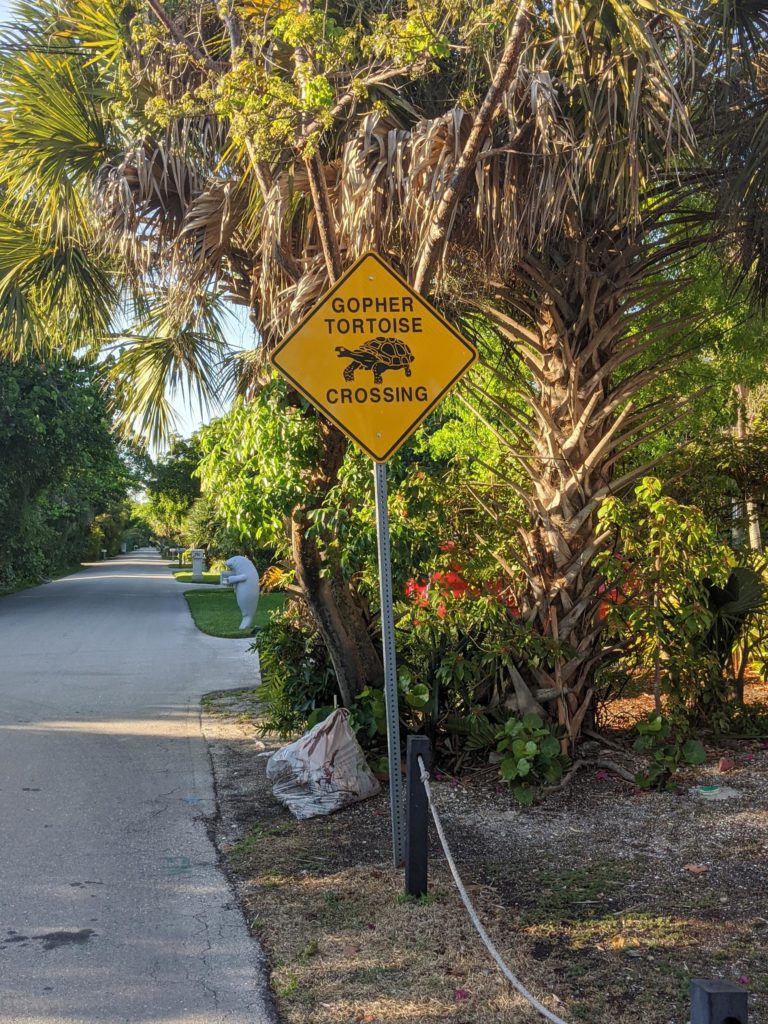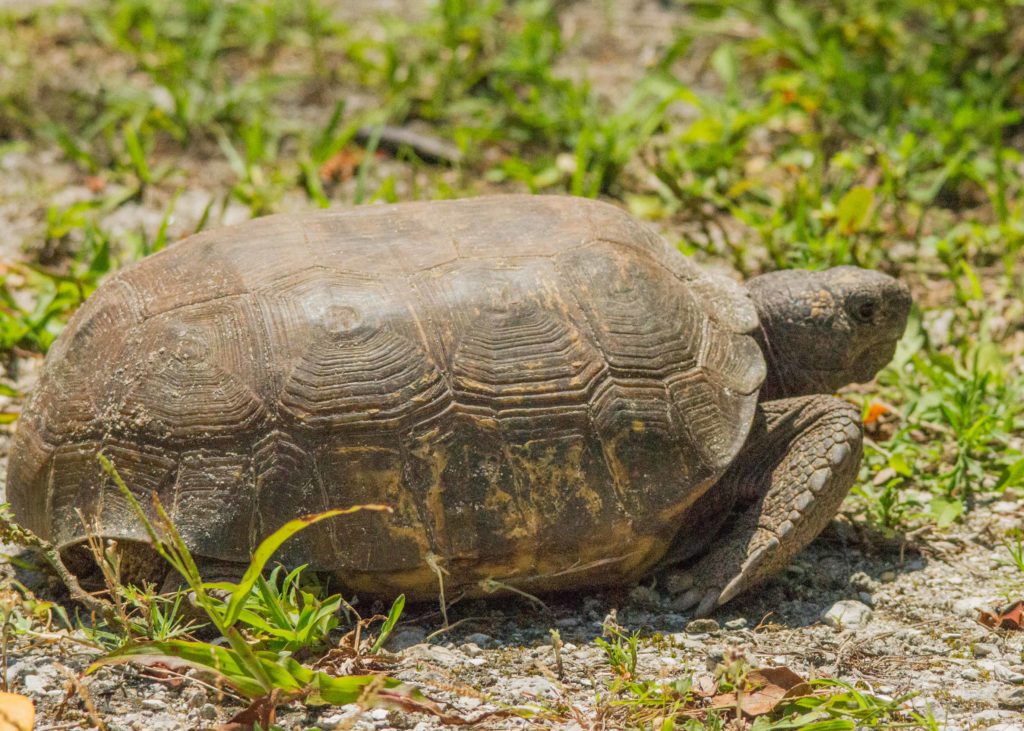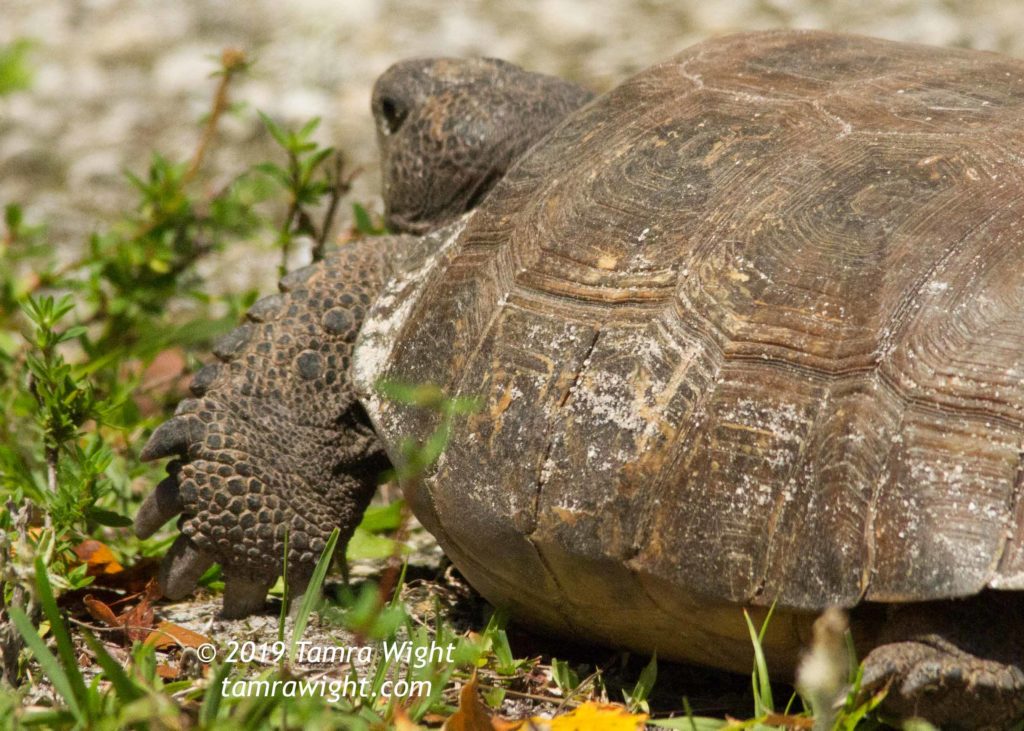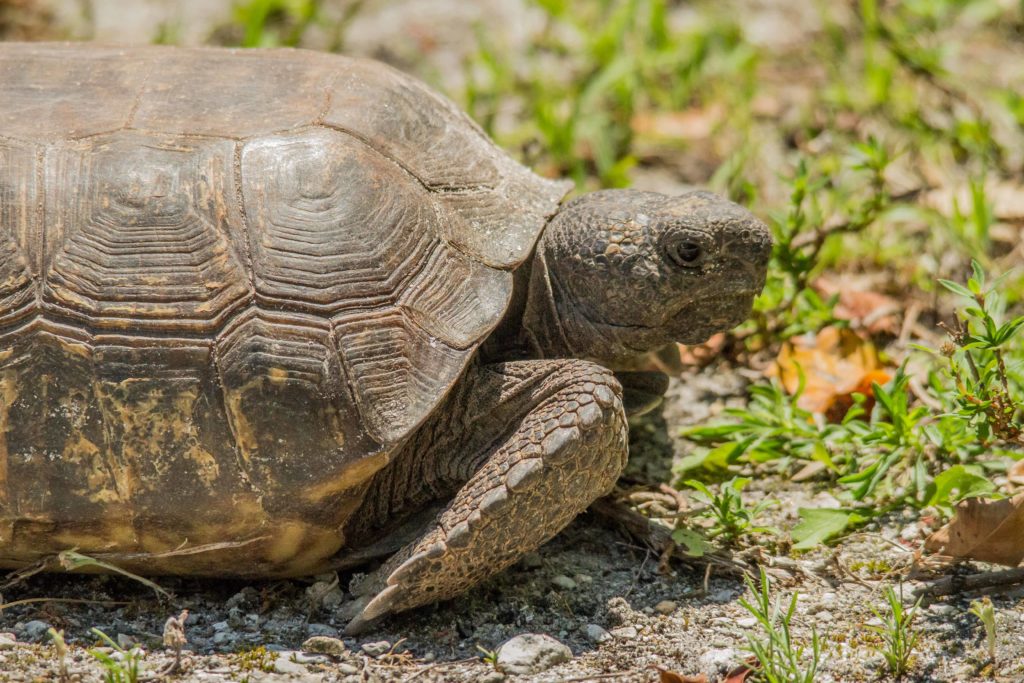An Endangered Species in Florida
I’ve visited my in-laws on Sanibel Island so many times over the last twenty years, that it has become like a second home to me. Everywhere you go, there are yellow warning signs that say: Gopher Tortoise Crossing.

Every year I’d visit, I’d look for them, but I wouldn’t see them.
Then in 2019, while driving back from a day on the beach photographing osprey snatching fish from the ocean, I suddenly hollered to my husband, “Stop the car, stop the car!”
There, on the grass on the side of the road, was a gopher tortoise! Finally!

Gopher tortoises can weigh up to 15 pounds, and have scaly, shovel-like front legs that are specialized for digging.

They’re a threatened species in Florida, and are the only tortoise east of the Mississippi. Hatchlings and young gopher tortoises are yellow and brown, but the bright color tends to fade with age. They dig many burrows in their lifetime and spend 80% of their lives around it. Burrows are approximately 15 feet long and 6 feet deep, and they help the tortoise maintain their body temperature in extreme weather, such as droughts or fires. They are also protection from predators.
The main reason the tortoise is endangered is because of a loss of habitat. They need land with trees, but not too many trees, so the sunlight can get through and the tortoises favorite plants to munch on, can grow. They also need dry, sandy soil to dig their burrows.
Another reason their numbers are going down, is because females are apt to be hit by cars as they travel to find a good nesting site.
Cool Facts:
- Gopher Tortoises can live 40 to 70 years in the wild
- Their diet includes wire grass, broadleaf grass, berries, flowers, apples, and mushrooms.
- Their burrows also become shelter for hundreds of different animals like burrowing owls, wild rabbits, mice, and indigo snakes. Because those animal’s survival depends on the survival of the gopher tortoise, this makes the tortoise a keystone species.
- Females lay 5 – 9 ping pong ball sized eggs, which hatch 80 to 100 days later. The hatchlings are on their own the minute they are born, with no adult to help them survive!

Florida has laws and rules in place to help the tortoises. Scientists are recording their movements and patters to learn more about them, and they’ve also created apps so people like you and me can report gopher tortoise sightings. They’ve also made it illegal to move a tortoise from its burrow.
What is YOUR favorite endangered species? Why is it endangered? Tell me about it in the comments below!
